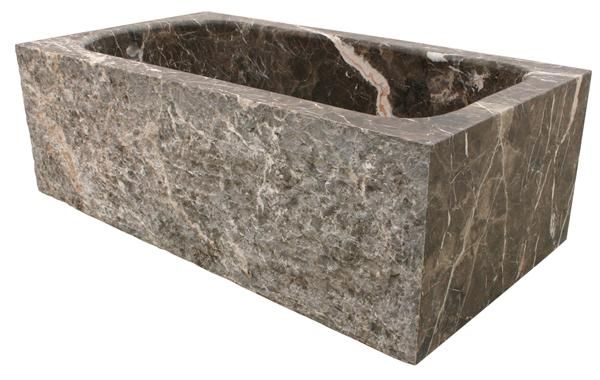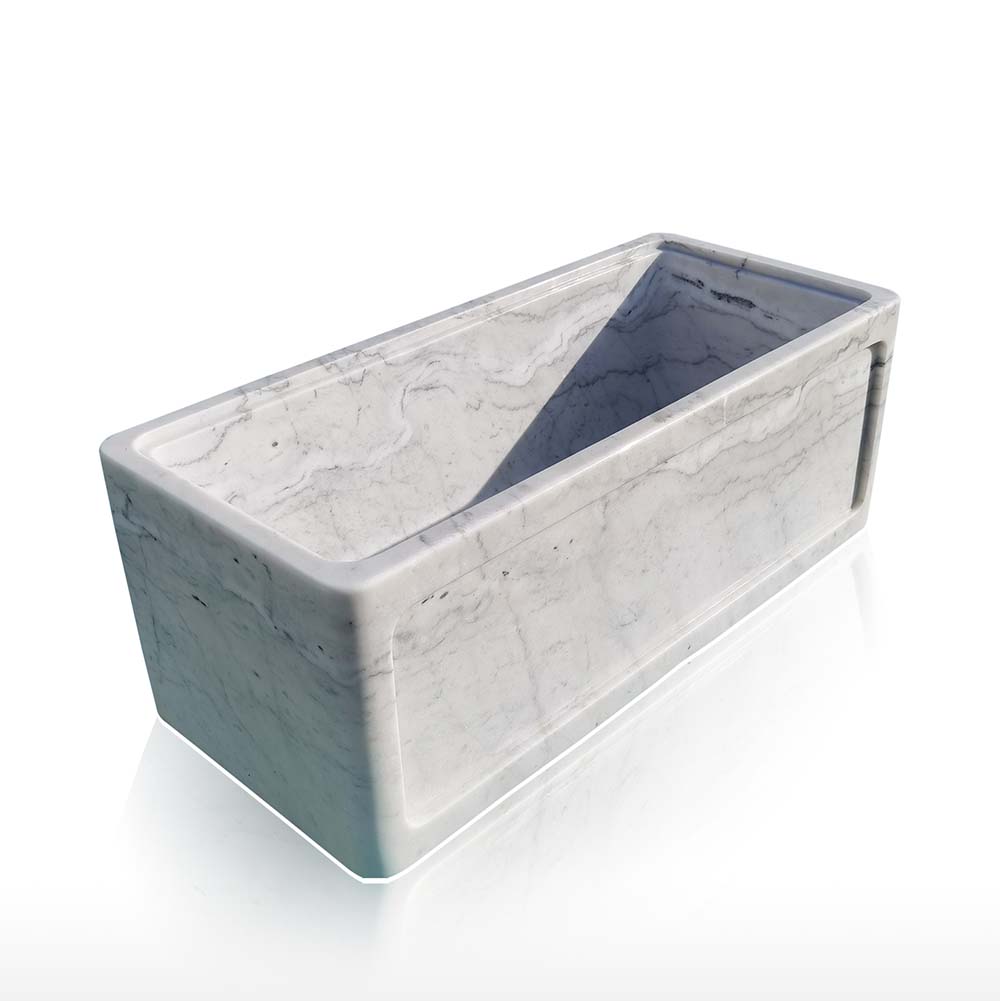A comprehensive guide to the history of bathtub designs, from the early days of oval and circular bathtubs to the emergence of rectangular bathtubs in modern times
Bathtubs have been a fixture in human homes for centuries, and their design has evolved over time to reflect the changing tastes and needs of society. In ancient times, bathtubs were typically oval or circular in shape and made of stone or metal. However, the introduction of rectangular bathtubs during the Renaissance ushered in a new era of bathtub design

Rectangular bathtubs offered a number of advantages over their oval and circular counterparts. They were more space-efficient, making them ideal for smaller bathrooms. They were also easier to clean and maintain. As a result, deep rectangular bathtubs quickly became the standard in modern bathroom design
In recent years, there has been a resurgence of interest in oval and circular bathtubs. This is due in part to the popularity of retro designs. However, rectangular bathtubs remain the most popular choice for many homeowners. They are versatile, practical, and enduringly appealing
In this article, we will explore the history of bathtub designs, from the early days of oval and circular bathtubs to the emergence of rectangular bathtubs in modern times. We will also discuss the latest trends in contemporary bathtub design, including the resurgence of oval and circular bathtubs
We hope you enjoy this journey through the history of bathtub designs!
The earliest bathtubs were likely used by the ancient Egyptians and Mesopotamians. These bathtubs were typically made of stone or metal, and they were often oval or circular in shape. The ancient Egyptians believed that bathing was essential for good health and hygiene, and they often took baths in public baths. The ancient Mesopotamians also had a strong emphasis on bathing, and they built elaborate bathhouses that were used for both religious and hygienic purposes.

Herod’s calcite-alabaster bathtub
The ancient Romans were particularly fond of bathing, and they built some of the most impressive bathhouses in the ancient world. These bathhouses were often large and luxurious, and they featured a variety of different bathing areas, including hot baths, cold baths, and steam rooms. The Romans also developed a number of different bathing techniques, including the use of oils, perfumes, and exfoliating scrubs.
The bathtubs used by the ancient Romans were typically made of stone or marble, and they were often quite large. These bathtubs were often decorated with elaborate carvings and mosaics. The Romans also developed a number of different types of bathtubs, including freestanding bathtubs, built-in bathtubs, and portable bathtubs.
The bathing practices of the ancient Egyptians, Mesopotamians, and Romans had a profound influence on the development of bathtub design in later centuries. The oval and circular shapes that were popular in ancient times continued to be used for bathtubs in the Middle Ages and the Renaissance. However, the introduction of rectangular bathtubs during the Renaissance ushered in a new era of bathtub design.
Rectangular bathtubs offered a number of advantages over their oval and circular counterparts. They were more space-efficient, making them ideal for smaller bathrooms. They were also easier to clean and maintain. As a result, rectangular bathtubs quickly became the standard in modern bathroom design
The ancient Romans had a profound influence on the development of bathtub design, and their influence can still be seen in modern bathtubs today. The Romans were particularly fond of circular bathtubs, and they built many elaborate public baths that featured these bathtubs

Terracotta bathtub, 12th – 14th century B.C.
There are a few reasons why the Romans preferred circular bathtubs. First, circular bathtubs were more space-efficient than oval or rectangular bathtubs. This was important in the ancient world when space was often limited. Second, circular bathtubs were easier to clean and maintain. The circular shape made it easier to get to all of the surfaces of the bathtub, and the smooth surface was less likely to harbor bacteria
The Romans also developed a number of different techniques for decorating circular bathtubs. They often used elaborate carvings and mosaics to decorate the bathtubs, and they also used colored marble to create a striking visual effect
The Roman influence on circular bathtubs can still be seen in modern bathtubs. Many modern bathtubs are still circular in shape, and they often feature the same type of decorative elements that were used by the Romans. Circular bathtubs are also still seen as being more luxurious than oval or rectangular bathtubs.
The Middle Ages and the Renaissance saw a number of innovations in bathtub design. One of the most important innovations was the introduction of the clawfoot bathtub. Clawfoot bathtubs are characterized by their claw-shaped feet, which provide support and stability. They are also typically made of cast iron or copper, which are durable materials that can withstand the weight of water and people.

Roman Bathtub
Another important innovation of the Middle Ages and the Renaissance was the development of new materials for bathtubs. Wood, stone, and metal were still the most common materials used for bathtubs, but new materials such as porcelain and enameled steel were also becoming available. These new materials were more durable and easier to clean than traditional materials, making them a popular choice for bathtubs.
The rectangular bathtub emerged during the Renaissance, and it quickly became the standard in modern bathroom design. Rectangular bathtubs offered a number of advantages over oval and circular bathtubs. They were more space-efficient, making them ideal for smaller bathrooms. They were also easier to clean and maintain. As a result, freestanding rectangular bathtubs quickly became the standard in modern bathroom design
One of the reasons why rectangular bathtubs became so popular is because they were more versatile than oval and circular bathtubs. They could be used for a variety of different purposes, including bathing, soaking, and even whirlpools. This versatility made them a popular choice for both homes and public baths.

Another reason why rectangular bathtubs became so popular is because they were more comfortable than oval and circular bathtubs. The rectangular shape allowed people to stretch out more comfortably, and the flat bottom made it easier to get in and out of the bathtub.
Today, rectangular bathtubs are still the most popular type of bathtub in the world. They are versatile, comfortable, and easy to clean, making them the perfect choice for any bathroom
The Industrial Revolution brought about a number of changes in bathtub design. One of the most important changes was the introduction of mass production. Mass production made it possible to produce bathtubs more cheaply and efficiently, which made them more accessible to the general public
Another important change was the development of new materials for bathtubs. Cast iron and porcelain became the most popular materials for bathtubs, as they were durable and easy to clean.

(Modern Natural Marble Stone Bathtub)
Modern manufacturing techniques have further improved the quality and variety of bathtubs available. Today, bathtubs are available in a wide range of shapes, sizes, and materials, to suit every taste and budget
In recent years, there has been a growing trend toward customization in bathtub design. This trend is being driven by a number of factors, including the increasing popularity of home improvement shows and the growing availability of online retailers that offer custom bathtubs
Custom bathtubs can be made to fit any size or shape bathroom, and they can be customized with a variety of different features, such as built-in jets, whirlpools, and shelves.
Contact Classybaths for any of your Natural Stone Bathtub projects
In recent years, there has also been a trend toward retro revivals in bathtub design. This trend is being driven by a number of factors, including the growing popularity of vintage furniture and the increasing interest in history and nostalgia.
Retro bathtubs are often inspired by the designs of the past, such as the clawfoot bathtubs of the Victorian era or the freestanding bathtubs of the Art Deco era.
These bathtubs can add a touch of personality and style to any bathroom, and they can also be a great way to bring back memories of the past
The most expensive bathtub in the world is the Golden Bathtub, which is made of solid gold and is worth over $1 million
The world's largest bathtub is located in a hotel in Japan, and it is big enough to fit 25 people.
The world's smallest bathtub is only 6 inches long and 4 inches wide, and it is made of plastic
There are many different types of bathtubs, including clawfoot bathtubs, freestanding bathtubs, built-in bathtubs, and alcove rectangular bathtubs.
The first bathtubs were made of stone, metal, or wood. Stone bathtubs were the most common type of bathtub in ancient times, and they were often made of marble, limestone, or granite. Metal bathtubs were also popular, and they were typically made of copper, bronze, or iron. Wooden bathtubs were less common, but they were still used in some cultures.

(Black Marble Papillon Bathtub)
The earliest bathtubs were likely invented by the ancient Egyptians and Mesopotamians. These bathtubs were typically made of stone or metal, and they were often oval or circular in shape
The latest trends in bathtub design include customization, luxury features, and retro revivals. Customized bathtubs can be made to fit any size or shape bathroom, and they can be customized with a variety of different features, such as built-in jets, whirlpools, and shelves. Luxury bathtubs feature high-end materials and finishes, such as marble, gold, and platinum. Retro revival bathtubs are inspired by the designs of the past, such as the clawfoot bathtubs of the Victorian era or the freestanding rectangular bathtubs of the Art Deco era.
Contact Classybaths to get started on all your customized Natural stone bathtubs projects
The average cost of a natural stone rectangular bathtub ranges from $3000 to $10,000 or more. Smaller designs typically cost around $3000 - $4500, while larger and more intricate bathtubs can reach higher prices. Custom-made or unique designs may have significantly higher costs. Prices may vary based on factors such as size, design complexity, material quality, and craftsmanship. It is best to consult with suppliers or artisans for accurate pricing based on specific requirements.
You can also purchase High-quality natural stone bathtubs from Classybaths Or Contact them for Custom made bathtubs
The history of bathtub design is a long and fascinating one. From the early days of oval and circular bathtubs to the emergence of rectangular bathtubs in modern times, bathtubs have evolved to reflect the changing tastes and needs of society
Today, bathtubs are available in a wide range of shapes, sizes, and materials, to suit every taste and budget. Whether you are looking for a traditional clawfoot bathtub or a modern freestanding bathtub, there is sure to be a bathtub out there that is perfect for you.

(Contemporary Black Marble Bath)
If you are looking for a high-quality natural stone bathtub, I recommend checking out Classybaths. Classybaths is a leading manufacturer of natural stone bathtubs, and they offer a wide range of styles and sizes to choose from. Classybaths also offers custom bathtubs, so you can get the perfect bathtub for your bathroom.
To learn more about Classybaths or to purchase a rectangular bathtub, visit their website or contact them today.